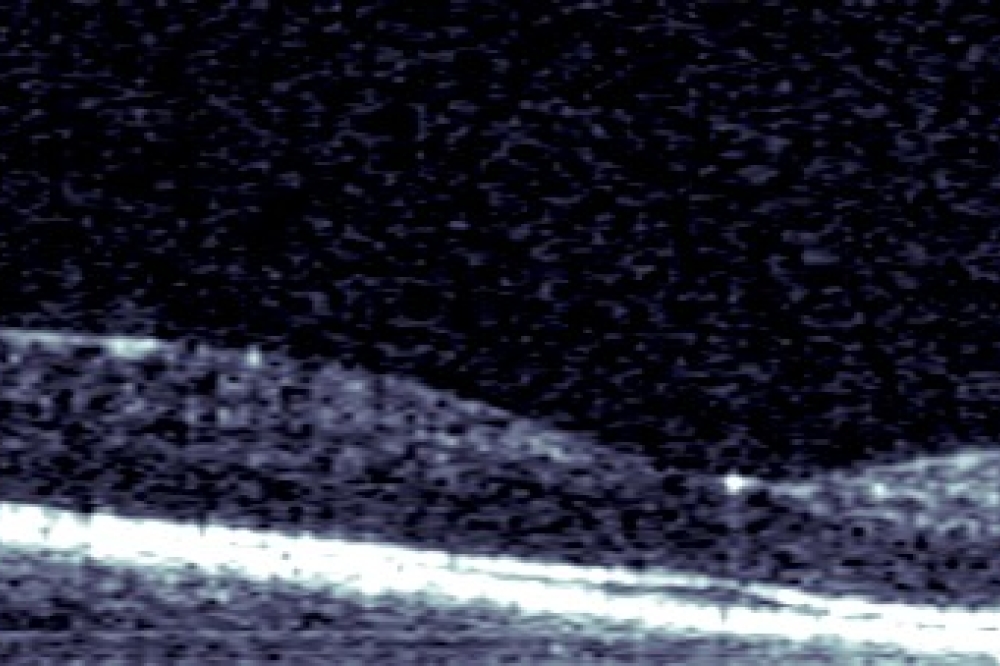Siloton uses PIC to take sub-surface image of human retina

The company says its technology shrinks the large optical components used in OCT imaging down to a photonic chip, and could be used to improve treatment of eye diseases that affect millions of people worldwide
Health tech start-up Siloton has announced that it has taken a sub-surface image of a human retina using photonic chip technology, becoming the first commercial organisation in the world to do so. The company says that this represents a major step forwards for improving diagnosis and treatment of eye diseases that affect the sight of millions of people across the globe.
Previously only achieved in academic settings, the image was obtained using Siloton’s first-generation optical coherence tomography (OCT) chip, called Akepa. OCT is a non-invasive imaging technique, similar to a high-resolution ultrasound, and is considered to be the gold standard for diagnosing and monitoring eye disease.
However, because of the size and cost of existing systems, the technology can only currently be accessed through hospitals and high-end optometrists. With Akepa, Siloton aims to compress a tabletop-worth of heavy, expensive, and fragile optical components onto a single piece of material smaller than a £1 coin.
Conditions such as wet age-related macular degeneration (AMD), retinal vein occlusion, and diabetic macular oedema affect millions of people worldwide, putting them at risk of blindness. AMD is the largest cause of sight loss in the UK, and last year the NHS reported that ophthalmology was the busiest outpatient speciality in secondary care. Siloton’s technology could save the NHS more than £1 billion annually and allow patients to monitor their condition at home, rather than having to regularly attend hospital appointments.
“OCT scans are critical to providing the sight-saving eye care that almost everyone will eventually need,” says Alasdair Price, CEO of Siloton. “However, there is a chronic shortage of imaging devices throughout the world. The Siloton team has shown that we can use affordable and scalable technology to expand the reach of OCT systems, reducing preventable blindness, alleviating pressure on eye clinics, and potentially saving healthcare providers like the NHS billions each year.”
Winfried MK Amoaku, consultant ophthalmologist and clinical associate professor & reader at the University of Nottingham, adds: “OCT imaging is an essential part of modern eye medical care, and the NHS is experiencing intense capacity pressures in this area. The technology Siloton is developing can dramatically improve access to retinal imaging, alleviating pressures to maintain high-quality eye care and handle greater patient numbers.”
Siloton recently secured £860,000 of new investment to support the development of its technology, taking its total funding to date to £1.7 million.
Image credit: Siloton



































